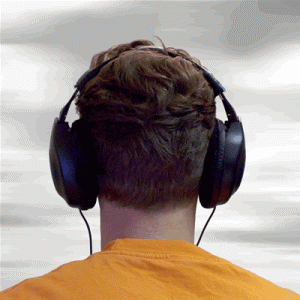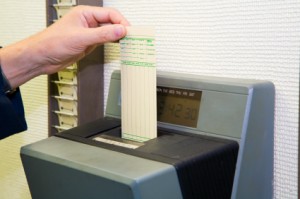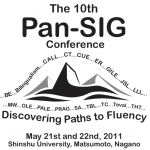curriculum EFL evaluation expectations extensive listening extensive reading university vocabulary
by sendaiben
leave a comment
The shock of sudden realization…
I was having an imaginary conversation with my boss the other day (something that happens a bit too frequently, perhaps), and had just finished telling him what a ridiculous concept it was to judge the performance, impact, or value of a teacher by the amount of time they spent at work when I had a huge revelation.
That is precisely how I evaluate some of my students!
Particularly for extensive reading, vocabulary study (using online tools such as the Word Engine), and listening, I tend to look at how much time students spent doing an activity, rather than how effectively they did so. The student that spends twenty minutes intensely focused on the task will fare worse than the one who sits there daydreaming for an hour, even though they probably got much more out of it.
In my defense, the main reason for this is that it is fairly difficult to evaluate how effectively someone has, for instance, read something, but it is also down to laziness on my part. Just as it would be ridiculous for my boss to judge my performance solely by how long I spent sitting in my office, I need to start thinking about how to assess my students in a fairer and more accurate way.
Part of it, I suspect, is going to depend on me giving up on being a teacher (look out for a post on this next week!).
How about you? Do you evaluate students based on their presence rather than their engagement?
curriculum EFL eikaiwa ES expectations extensive listening kids language courses Language learning listening school management self-study teaching
by sendaiben
6 comments
Practicing speaking with (young) learners
I am a strong believer in input-based learning, as that is how I best learn languages myself. However, recently I have started to question this approach, particularly but not exclusively for my younger students.
There does seem to be a ‘silent period’ for most learners, where they are more comfortable listening than speaking. This varies according to age and character, but seems to exist for all learners (even if it is just a few minutes for the most active/outgoing). I wouldn’t take it as far as this school (which enforces a silent period of about 6-8 months), but I like to keep it in the back of my mind.
The arguments for following a silent, input-heavy period seem pretty persuasive to me:
1. learners can get comfortable with the sounds of the language
This is important because if you can’t hear a sound, you’re unlikely to be able to produce it. There seems to be a case for delaying production until students have enough exposure to the sounds and rhythms of a language.
2. learners can become familiar with basic vocabulary and grammatical chunks
Assuming the input is at an appropriate level, learners will be able to hear the same vocabulary and grammatical chunks multiple times, beginning to acquire them.
3. learners can relax, lowering their affective filter and allowing them to focus on the language
This is pure TPR talk, but I find TPR extremely effective for beginners. Being able to sit back and not have to worry about performance seems to make it much easier for learners to pick up language.
However, this is a slow process. We’re talking about hundreds of hours.
In Japan, where most children learn English for an hour or less a week (elementary school age children at our school have 50-minute lessons), it is clearly not enough to expose children to appropriate input and wait for them to want to speak.
I think David Paul was very right to emphasise teaching children basic phonics so that they would be able to do reading and writing homework as soon as possible. I find children find it much easier to remember language when they have heard, said, read, and written it. It also has the happy side effect of seguing into extensive reading. Recently at Cambridge English we have been trying out various reader programs (Follifoot Farm, Story Street, Oxford Reading Tree, Springboard Readers, Rigby Star). On the whole students enjoy reading in class and for homework.
The other thing we have started doing recently is memorizing questions and answers and short dialogues. At first I wanted to make our own materials (something that may yet happen), but soon after that we came across MPI’s QA series, which does almost everything we want and saves us from reinventing the wheel. The books are not perfect, they have a few awkward questions in there and I’m not sure that the QA300 series really works, but they are cheap, easy to use, come with Japanese translations for students and parents to fall back on, and have CDs available.
So far I’ve been pleased with the results. Each student is set a few (2-10) questions to prepare each week, then has a test in their next class. If they can answer perfectly, they clear the question and get assigned new ones. If not, they review the same questions for the next class. Most students enjoy the challenge and are remembering more common questions. A few students love it and are shooting through the series, and some students are really struggling. As the students work individually at their own pace, this is not too much of a problem. On the whole , it’s been a positive development for our school.
So there we go. I still believe in input, but feel that it is not enough for a Japanese eikaiwa context. We supplement with reading and writing as well as memorising question and answer patterns, which seems to help but we’re still not completely where I would like us to be.
What do you think the most effective ways to teach children in an eikaiwa context are?
business conference curriculum EFL eikaiwa ES expectations extensive listening extensive reading kids language courses Language learning listening online resources presentations Reading school management self-study teaching technology theory university vocabulary
by sendaiben
8 comments
Amazing Minds 2011
I’m on the train on the way back to Sendai now, after a long, tiring, and wonderful weekend talking and learning about teaching. Pearson Kirihara was kind enough to invite me to their annual study meet, Amazing Minds, held in Tokyo this year.
The basic idea behind the event is that the publisher’s sales representatives nominate teachers all over Japan who are then contacted to see if they want to attend. Pearson picks up the tab for travel, accommodation, and food, and puts on a two-day program of presentations, discussions, and informal gatherings. Apparently it’s supposed to be a chance for the company to give back to the teaching community, to join and contribute to the dialogue on teaching in Japan, and to get to know individual teachers better.
I was initially skeptical, although having two of my friends (John Wiltshier and Ann Mayeda) presenting made it a lot easier for me to say yes and make the effort to clear my schedule.
The program for the event was three blocks: one on Saturday followed by dinner, then two on Sunday. Each block consisted of an initial one-hour lecture followed by a ninety-minute group activity session, and finally a feedback session to finish off. Each block was three and a half hours, a long time when you are out of practice concentrating. I got a good sense of what my university students go through most days (they have up to five ninety minute lectures per day).
The three lectures were:
“Two Pathways for Successful Language Learning”, John Wiltshier
“Teaching in 2020: Rethinking the Classroom Environment”, Ann Mayeda
“Lesson Analysis Checklist for Elementary School English Education”, Emiko Yukawa
I have to say I really enjoyed the presentations and came away with dozens of actionable ideas. Overall it was a great experience. I did notice a few things that could be tweaked to make it even better, but I have already passed those on to the organizers and don’t need to mention them here. Instead, I’d like to talk about the highlights.
Probably the biggest realization came during the first lecture, as John was talking about procedural and declarative memory, as well as the optimal period for language acquisition. It came to me quite suddenly that perhaps I am not a normal language learner. After all, I learned my first second language when I was five, in a total immersion environment. I have been at least intermediate in six languages, and find it fairly easy to pick up new ones mainly through input and trial and error. Very few people have this kind of background.
The problem is that I have made all sorts of assumptions about teaching and learning that are based on the possibly mistaken belief that my own experiences are generalizable -that I can teach my students as I would like to be taught and this will provide them with an optimal learning environment. If I am an outlier, however, this is unlikely to be ideal for my students. There will possibly be more effective ways of helping them learn and I will have to go back and examine literally everything I do once again with an open mind.
This seems fairly obvious when I write it here, but it seriously had not really occurred to me before.
Fortuitously, my beliefs about language learning are mainly a bias towards large amounts of input of the appropriate level, a desire to encourage my students to become self-directed and independent learners, and a tendency to believe that learners need to practice in order to improve (ie listen if they want to get better at listening, talk if they want to talk, and so on). I don’t think any of these are harmful.
The second, perhaps less revolutionary, but more specific breakthrough came from Ann’s presentation on flipping the classroom. Much like the Khan Academy, she is interested in ways teachers and learners can lever technology in order to do more outside the classroom, in turn allowing them to use their limited class time on more efficient or productive activities.
It’s a concept I have been very interested for a long time, as it ties in with my own beliefs about the best ways to learn a language.
Independent, self-directed learning is the only way students can possibly get the necessary amount of input and practice they will need to master English. The amount of time is several orders of magnitude larger than even the most specialized or intensive language course could provide. Using the power of the internet to facilitate this means that it is easier than ever for students to come into contact with foreign languages.
The only specifically new things for me in the presentation were several iPad/iPhone apps, but the real value came from the way I was reminded of various extremely promising ideas that I had meant to implement, but that had somehow ended up on the back burner.
Creating a Youtube channel for my students, pre-teaching things online so that students to go over them as many times as they need to in order to master them, introducing online resources in a more systematic way, monitoring and advising students as they explore various self-study options.
Hopefully I’ll be able to get started on one or more of these in the near future. I will definitely keep you posted.
Finally, Yukawa-sensei’s presentation gave me a good look at a systematic way of assessing classes and lesson plans. Again, there was nothing new in this presentation, but it was a great opportunity to once again go back and think about things in a slightly different light.
I used to do a lot of classroom observation when I was the ALT Advisor at the Miyagi Board of Education, and although I didn’t have anything as elegant as Yukawa-sensei’s checklist, I was looking at similar things.
I’ll be applying to checklist to my own classes this week, and predict that I will find several areas to work on during the next few months.
I really enjoyed the weekend and hope Pearson continues putting on these events for teachers and that they consider having me back again sometime.
conference curriculum EFL eikaiwa extensive listening JALT Language learning presentations readers Reading teaching technology testing
by sendaiben
leave a comment
My favourite conference in Japan
The call for papers for my favourite conference in Japan just came out -you can see more here.
The 2011 JALT Pan-SIG Conference will be held in May in Nagano. I really recommend it. Smaller, more relaxed, and friendlier than the national conference, the real selling point is the distilled value.
The Pan-SIG is made up of all the special interest groups in JALT, groups that specialize in things like computer assisted language learning, extensive reading, teacher training, pragmatics, teaching adult learners, and many others. These specialised groups then choose the presenters they want to represent them. In practice this means that the quality of presentations tends to be very high. I seldom feel I am wasting my time at the Pan-SIG.
I will hopefully be presenting on extensive reading (that idea that Eleanor told me to develop). I hope to see a lot of friends there too!
EFL eikaiwa extensive listening JHS Language learning listening online resources self-study
by sendaiben
2 comments
Great listening practice -improved! How to combine two websites to maximise student benefit
 Last Thursday I was teaching a special class to high school students (my university loves reaching out to the community, and this program is part of their PR efforts) when I accidentally combined two websites: Popjisyo and Elllo. I encourage my students to use both websites, but had never thought to combine them before.
Last Thursday I was teaching a special class to high school students (my university loves reaching out to the community, and this program is part of their PR efforts) when I accidentally combined two websites: Popjisyo and Elllo. I encourage my students to use both websites, but had never thought to combine them before.
Accessing Elllo through Popjisyo allows students to get mouseover translations of tricky words in the transcripts, and also to save new words to a vocabulary file that they can then email to themselves to review later.
Best of all, both websites are free and don’t require registration, so they are easy to introduce and get students using. This also opens up Elllo to lower level students that would have found it too challenging without the mouseover translation support.
I successfully introduced the combination to junior high school students on Saturday, and they seemed to like it!



